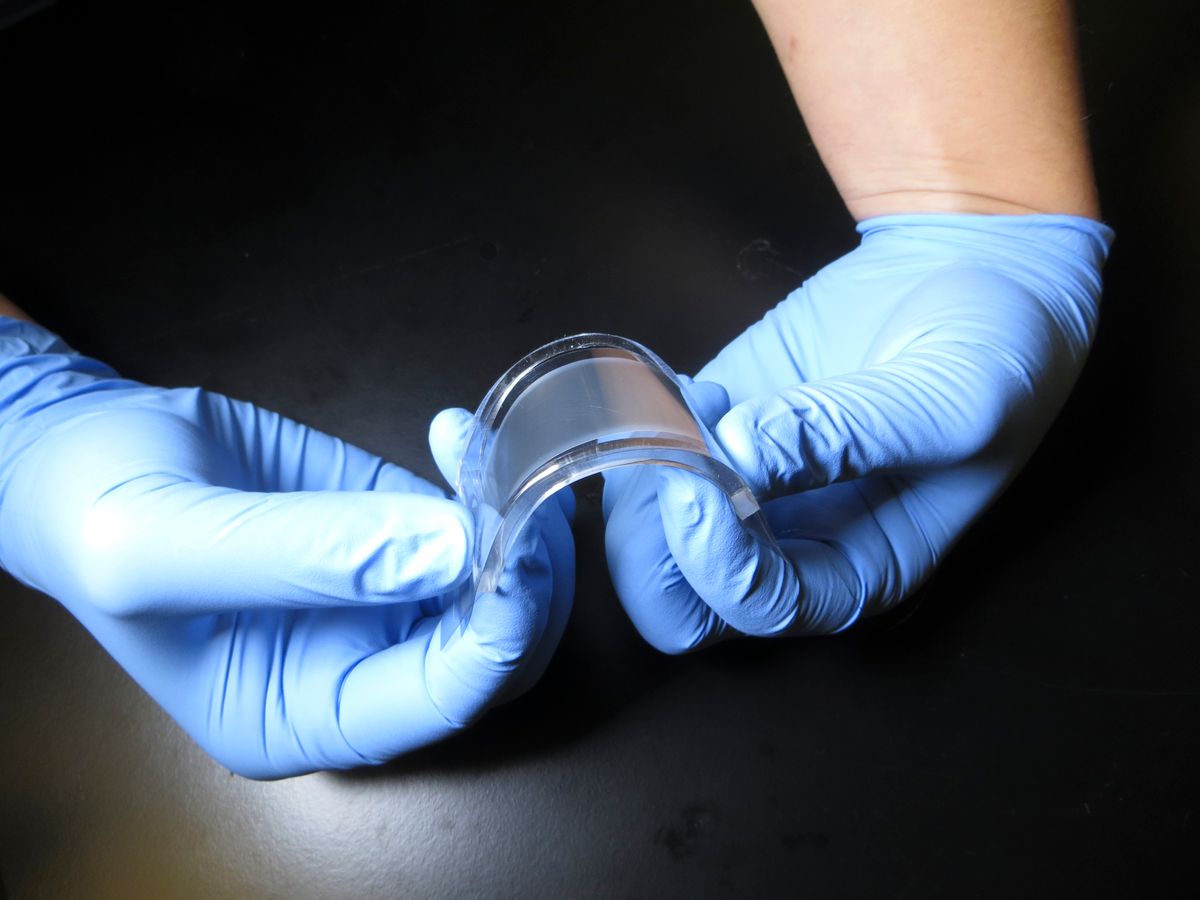Can you imagine an electric cooler compact enough to fit in your pocket and flexible enough to wear? If not, think again because engineers at the University of California at Los Angeles and SRI International have one working: A 5-millimeter-thick device that is the world’s first solid-state cooler combining practicality, energy efficiency, and high performance.
Solid-state cooling has become a highly-competitive field in recent years as researchers race to develop alternatives to conventional compressor-based refrigerators and air conditioners, which gobble considerable energy and rely on refrigerants that are potent greenhouse gases. In 2014 General Electric heralded a “breakthrough” using materials that heat and cool when moved near and away from magnets, enthusing that its “magnetocaloric” system could be “inside your fridge by the end of the decade.”
Other teams are exploring a myriad of alternate approaches, including “elastocaloric” materials that heat and cool in response to pressure. But the comparatively simple working device from UCLA and SRI, reported in today’s issue of the journal Science, may give these competitors the chills.
UCLA materials science and engineering professor Qibing Pei, who led the work, says he was motivated by the prospect of delivering personalized comfort with little energy. “It may be placed in a shoe insole or in a hat to keep a runner comfortable in the hot Southern California sun. In a way, it’s like a personal air conditioner,” says Pei.
The UCLA-SRI device relies on the electrocaloric effect, which occurs in materials whose molecules have positively and negatively charged ends. An electric field aligns the molecules, increasing the order in the material and thus increasing its temperature.
Fundamentally, it is the same thermodynamic behavior that causes a steam burn, where water condensing on your skin jumps in temperature as it morphs from a disordered gas to a comparatively orderly liquid. And the electrocaloric effect is just as reversible: Relax the electric field on the material and its temperature drops.
Electrocaloric cooling R&D has been heating up over the past decade with the discovery of thin films that produce larger temperature shifts, including the polymers used by Pei and his team. The added value that the UCLA-SRI team delivered is an innovative scheme to apply the polymer films in an efficient cooling cycle and thus move heat from one place to another.
Their solution: applying another electric field to electrostatically shuttle a thin film of the polymer between their cooler’s cold and hot ends. It is an elegant design, according to Pennsylvania State University researcher Qiming Zhang, who discovered the electrocaloric abilities for the polymer Pei and his colleagues use. “The polymer is both the refrigerant, which generates temperature change, and the pump, which efficiently transfers the refrigerant between the cold and hot ends,” write Zhang and his colleague Tian Zhang in an essay accompanying Pei’s report in today’s Science.
Pei says electrostatic force is not only a great way to move the material. It also forms a high quality thermal connection to the polymer. “When that force is in place the film is squeezed to the heat sink or source,” he adds.
In structure the device resembles a sandwich within a sandwich. The polymer component is a dual-layer stack of flexible electrocaloric film, separated by carbon nanotubes; voltage is applied (or relaxed) across the layers to change the stack’s temperature. That polymer stack is itself situated between a pair of electrodes—aluminum plates or flexible sheets coated with conductive films—that form the heat sink and the heat source of the device.
Its refrigeration cycle is silent, rapid, and efficient: First the polymer stack is pulled against the heat sink electrode where heat is to be dumped. There the voltage is applied across the polymer stack, increasing its temperature and dumping heat. Then the polymer stack is shuttled back to the heat source electrode, the voltage on the stack is cut to cool it, and the stack absorbs heat—loaded and ready to be shuttled back to the sink.
Testing on their first prototype, a solid device, found it delivered 150 times as much cooling per gram of material than estimates published for the best prior electrocaloric device. And the device endured 30,000 cycles without evidence of degradation.
The team demonstrated their flexible device by mounting it on a Samsung Galaxy G4 smartphone battery heated to 52.5° Celsius by heavy use. Within 5 seconds the cooler had chilled the battery by 8° Celsius.
Pei says a direct efficiency comparison with conventional cooling equipment is difficult, because the lab devices deliver a comparatively smaller temperature shift than commercial units. But he says he expects electrocaloric cooling to be “equivalent to or more efficient” than regular vapor-compression cooling. Zhang and Zhang note recent modeling of an electrocaloric cooler that affirms Pei’s hunch.
However, Pei says electrocaloric coolers are likely to find their first use in applications where compressor systems are impractical. One is silent, compact air conditioners built into chairs that Pei argues could lower energy consumption in buildings, which centralized AC systems frequently overcool. Another is the smartphone cooling already demonstrated, which he says could reduce heat strain on phone components and lower the risk of battery fires such as those that have afflicted Samsung.
Another idea Pei dreamed up is small portable coolers. “People take food to hiking or camping. You could use this to refrigerate it,” he says. Such a product could have significant social impact in the developing world in the form of small low-power refrigerators for storing heat-sensitive medicines and vaccines. Offgrid villages increasingly have access to home solar panels or small mini-grids, but at present few generate enough wattage to support a fridge.
Peter Fairley has been tracking energy technologies and their environmental implications globally for over two decades, charting engineering and policy innovations that could slash dependence on fossil fuels and the political forces fighting them. He has been a contributing editor with IEEE Spectrum since 2003.



